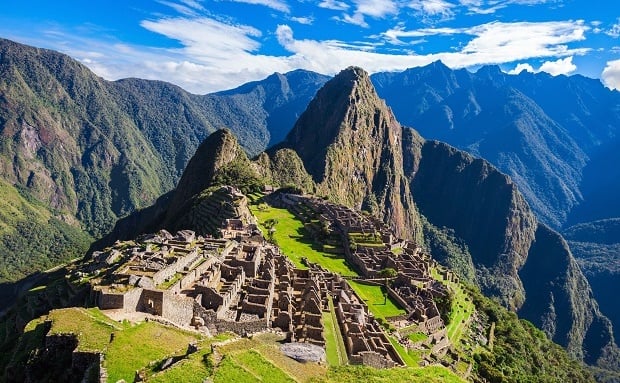Peru: Wild landscapes and ancient wonders

Peru is the third largest country in South America. It consists of a variety of landscapes, including the world’s second highest mountain range, the Andes, deserts, beaches and of course the Amazon rainforest. Most people live along the coast of the Pacific Ocean where the capital, Lima, is located. Peru shares borders with five countries – Ecuador, Colombia, Brazil, Bolivia and Chile. It is a fascinating country sure to be on every intrepid traveller’s bucket list.
Peru’s earliest inhabitants date back to more than 13,000 years ago. Beginning around 1000BC, several societies developed in different parts of Peru, including the Chavín, Moche and Nazca. One of the most important Peruvian cultures was the Inca, who lived in Peru around 600 years ago. Their capital, Cusco, is still a major city today. The Incas also built Machu Picchu, a famous ancient city in the Andes. Today, Machu Picchu’s spectacular ruins are a popular site for tourists. The Incas thrived for centuries, before being conquered by the Spanish in 1532.
Other must-see attractions include the Sacred Valley, the once fertile homeland of the Inca Empire, as well as the mystical Nazca Lines. The lines are found in a region of Peru just over 370 km southeast of Lima, near the modern town of Nasca. In total, there are over 800 straight lines, 300 geometric figures and 70 animal and plant designs, also called biomorphs. Some of the straight lines run up to 55 km, while the biomorphs range from 15 to 356 metres in length. Difficult to distinguish on ground level, these lines really only come to life when viewed from the air.
Nearly half of Peru is covered by the world’s largest rainforest, the Amazon. Thousands of fascinating plant and animal species inhabits this mysterious humid verdure that is home to hundreds of Amerindian tribes, some of which may never have seen the outside world! A riverboat cruise is an absolute must as it offers fascinating glimpses into life along the Amazon River and its many tributaries.
Lake Titicaca is the largest lake in South America and the highest navigable body of water in the world. It is also, according to Andean belief, the birthplace of the sun. The Uros islands are a group of 70 man-made totora reed islands floating on the lake. Its inhabitants, the Uros tribe, pre-date Incan civilisation and continue to hunt and fish the plentiful land and waters they occupy. It is a place where time seemingly stood still.



Comments